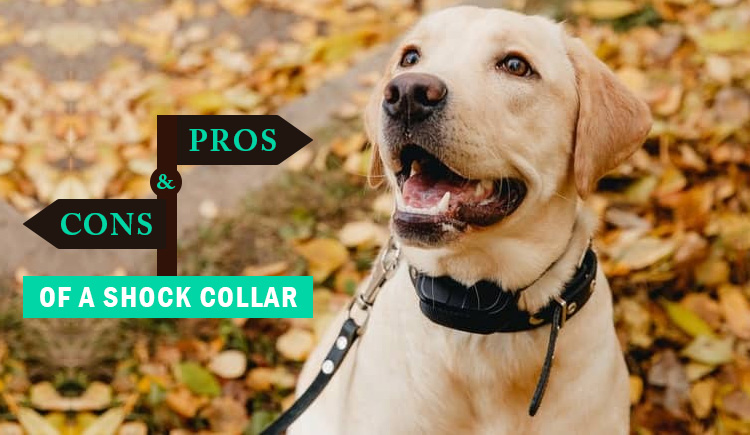Shock collars are used by pet parents as a tool to teach and train dogs and ensure that they don’t continue their bad behaviour. Here are 3 Pros and 3 cons that you should go through before getting a shock collar for your dog.
Pros
1. Quick Results
Some pet parents report that it took fewer shocks to correct unwanted behaviours in their dog, and at the moment, the beep or vibration as warning was enough. Shock collars can even be amazingly effective at keeping your dog on your property, which is able to keep them safe whereas giving them freedom. Of course, additional stubborn dogs could take longer to coach.
2. Intensity Is Adjustable
Most modern shock collars offer you the pliability of a warning beep or vibration mode, and adjustable shock level. This may be comforting to those that are on the fence of employing a shock collar. Alternative collars, like spray collars, that administer a harmless but stinking substance to stop the dog from barking, are however sometimes not comfortable.
3. You ought not To Monitor All the Time
If shock collars are used to control chronic barking, they work even when you’re aloof from home or within the house. This may be particularly useful if you’ve had neighbours complaining about your dog’s loud protests. Shock collars as boundary control, are also used though it doesn’t require any particular training.
However, a loving parent would never leave his/her dog alone with a shock collar for obvious emotional reasons. These collars are also affordable and come at price ranging from $30 to $250.
Cons
1. The Shock Therapy Is a Feedback Therapy
Most pet parents can’t see the pain it causes to their beloved pets. However, even with the flexibility to manage the intensity, you’re still using the forced behaviour management therapy. Several dog trainers opt for positive reinforcement (reward) as a way of conduct management therapy over feedback.
2. The Fear
Fear in dogs is often dangerous, therefore you ne’er wish to coach a dog who is stressed out. With shock coaching, some dogs could develop fright from humans, objects, or things associated with collar.
3. No Positive Reward
On their own, shock collars don’t reinforce sensible behaviour with a positive reward like your love, verbal approval (“Good boy!”) or a tasty treat. Therefore, a shock collar could effectively deter negative behaviours like jumping on guests or running towards the delivery boy or mail carrier, it doesn’t reward positive behaviour like sitting with patients or obeying a command to “Stay!”Like any coaching, you must perpetually reinforce positive behaviour with an award of care & love, cuddle or a small treat.
Now you are well aware of the positives and negatives of shock collars. It’s your choice if you want to order one or not. Nevertheless, there is one more very effective behaviour management device called Adaptil Collar that calms them down in stressful situations.


